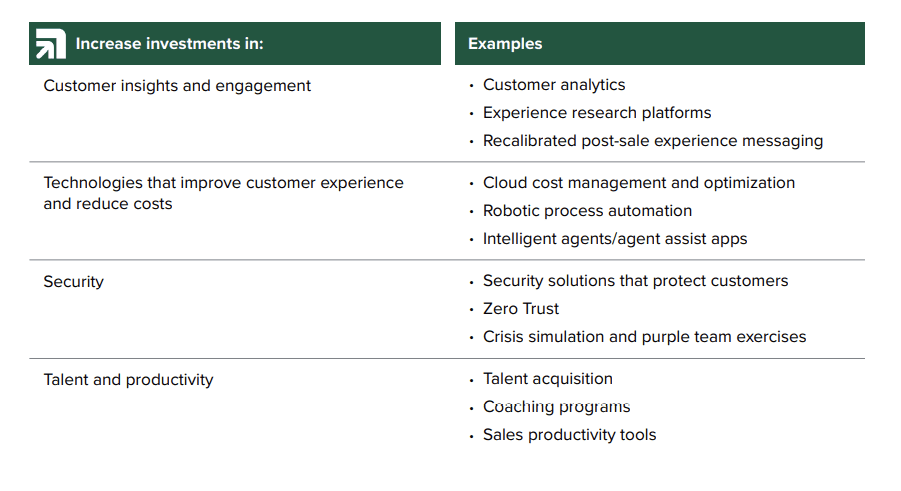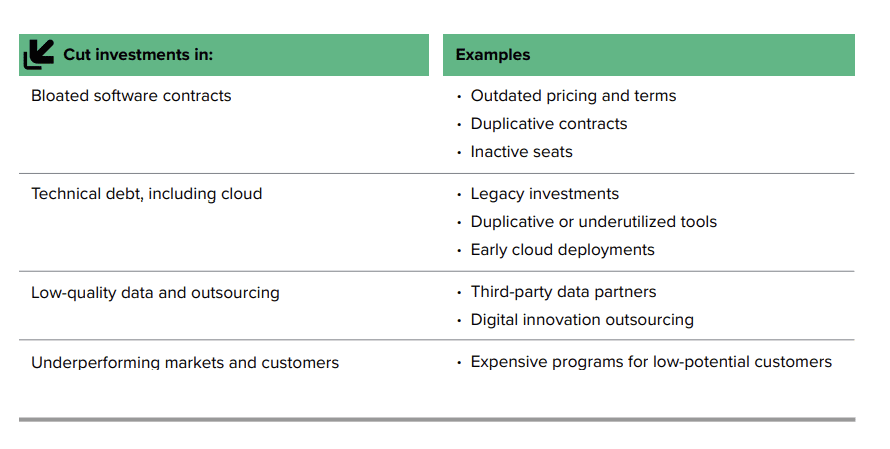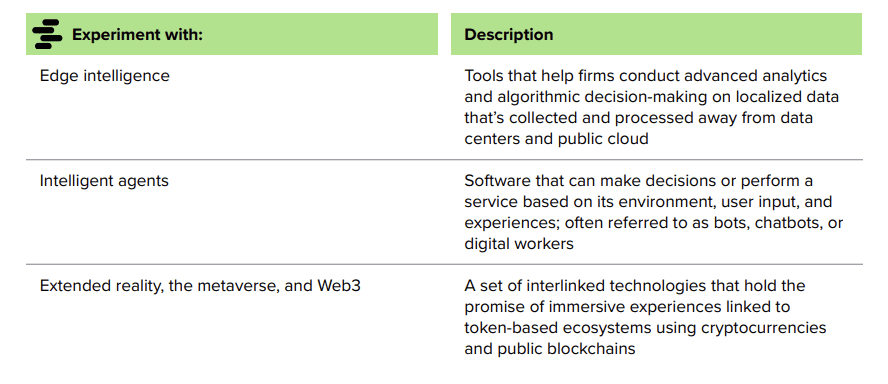As global unrest, supply chain instability, rising inflation, aftermaths of the pandemic, and an economic slowdown continue to dominate, the IMF projects that world economic growth will decrease to 3.2% this year, from 6.1% in 2021. In spite of an overall increase in employment rates, tech enterprises are laying off employees and also freezing hiring processes. IT leaders investment planning for 2023 is going to be difficult because overall spending is slow and employment trends are turbulent and unpredictable.
Business and technology decision-makers from different functions report their budget plans for 2023 in Forrester’s Budget Pulse Survey. Most leaders say that expect the overall spending to increase in 2023. Despite hiring freezes and layoffs at leading tech firms, leaders say they will not decrease spending on talent. On average, 60% of leaders expect to increase spending on personnel and 62% expect to increase spending on external services. Leaders don’t want to slow down tech investments. 67% expect budget increases in technology.

Investment planning guidelines by Forrester for IT leaders
IT leaders can’t just cut down spending without thinking about it. They will have to be more careful and think about where they need to invest. Some things might be worth investing in while others should be trimmed. IT leaders need to plan precisely in order to make smart investments.
Where should leaders invest in 2023?
IT leaders should invest in those areas that will help their businesses grow and generate more revenue. This includes technology, talent, and insights that help understand the customers better. These investments will enable the organization to stand out from the competition during tough times.

Customer insights and engagement: Improve audience targeting and get better results by investing in more reliable customer data. Prioritize investments in data normalization and augmentation from different sources, as well as customer analytics and experience research platforms. Focus on the post-sale experiences of your customers as this can drive loyalty, cross-sells, and upsells among them.
Technologies that improve customer experience and reduce costs: The current economic conditions mean that we need to focus on technology that is designed for optimization and resilience. Technologies like document extraction, robotic process automation (RPA), and agent assist apps can help create well-designed self-service experiences that are more reliable. They also save money, because self-service channels are less expensive than staffed ones.
Cybersecurity solutions: Prioritize security solutions that protect data that is important to customers and also data that is critical to industries like utilities, energy, and transportation. IT leaders should also defend their investments in cloud modernization and adopt Zero Trust. Investing in crisis simulation and purple team exercises ensures preparedness if any breach occurs.
Talent and productivity: IT leaders need not stop the things they did to improve talent acquisition and retention this year. Instead, they must focus more on improving productivity. For example, sales leaders should not rely too much on a few good reps or on hiring more people. They should invest more in things that can be done easily, like processes that are based on data and insights.
Where to cut down investments?

Bloated software contracts: Some software markets are unstable because of economic uncertainty. Established firms are having a hard time living up to their values, and new entrants are struggling to survive. This is a good moment to renegotiate prices, optimize terms, and consolidate contracts.
Technical debt: In 2023, leaders must reduce the number of legacy investments and tools that are duplicative or underutilized across the entire tech stack. They must also consider early cloud deployments as candidates for technical debt reduction.
Low-quality outsourcing: IT leaders need to keep working with external partners who help in the growth of the organization. Partner only with those companies that can help improve customer relations and offer a future-proof solution. They must also consider bringing more innovation in-house, which can save money and retain talented employees.
Underperforming markets and customers: Leaders must focus on high-potential customers and market segments. However, they can employ lower-cost nurture programs with buyers in those segments affected by the economic challenges.
Investing in emerging technologies of 2023
Even though there is a need to make real cuts, leaders must not get rid of all experimentation when it comes to new technology. Such experiments help stay different from other companies and they also aid in deciding if they should keep investing in this technology.

- Edge intelligence brings analytics directly to the customer. Edge intelligence will help create better customer digital experiences as it can process large local data sets and generate personalized interactions.
- Intelligent agents (IAs) make experiences more human. IAs are software capable of making decisions or performing a service based on their environment, user input, and experiences. They are often referred to as bots, chatbots, or digital workers.
- Extended reality, the metaverse, and Web3 offer immersive experiences. These new technologies might offer great experiences that are linked to token-based ecosystems using cryptocurrencies and public blockchains. Companies in the consumer industry should experiment with platforms like Roblox and Decentraland to find new customers. And all industries must consider employee-facing experiments to drive collaboration, remote assistance, training, and onboarding.
- TuringBots write code on their own. These are AI-powered bots and can enhance developers’ ability to design, build, change, test, and refactor software in automatic and autonomous ways.
- Privacy preserving technologies (PPTs) help protect data. PPTs enable organizations to protect customers’ and employees’ data while processing it. It unleashes the potential of high-performance AI models while complying with privacy, ethics, and other regulatory requirements.
Investment planning for 2023 comes with its pressures, but it is also an opportunity to focus on what is important, create differentiation, and make your customers happier.
For deeper insights into the planning guide for 2023, download the report here.
Read next: 37% of surveyed organizations in the US lost at least $100,000 or more: Keeper report









